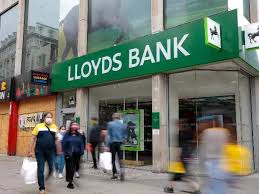Lloyds Share Price Surge: Is This the Breakout Everyone’s Talking About?
Are you keeping tabs on the “lloyds share price”? If not, you might be missing out on one of the most talked-about UK banking stocks right now.
In this article we’ll break down: where the share price stands, what’s driving it, risks you need to know, and whether this could still be a buying opportunity.
(This is not financial advice — always do your own research.)

1. Where things stand: The current “lloyds share price” snapshot
Let’s get you up to speed.
- According to a UK broker listing, the shares of Lloyds Banking Group plc (ticker LLOY) are trading around 94–95 pence. (Hargreaves Lansdown)
- Over the last 52 weeks, the share price has ranged from a low of ~52.44p to a high of ~95.58p. (London South East)
- Analysts’ average 12-month price target is around 97.80p, with some high targets up to ~110p and lows down near 84p. (TipRanks)
- The company has announced a share buyback, cancelling >10 million of its own shares in a bid to boost shareholder value. (TipRanks)
So yes — the lloyds share price is at or near multi-year highs. (IG)
2. What’s driving the rise? Key catalysts behind Lloyds share price
Several factors are contributing to momentum in the shares:
a) Strong banking environment & interest rates
With interest rates elevated, banks tend to earn more from lending vs deposits. That helps margins and earnings potential for banks like Lloyds. Some commentary points to this as part of the strength. (Investing.com)
b) Share buyback programme
As mentioned, Lloyds is reducing its share count via cancellation of its own stock, which supports the share price by boosting earnings per share (EPS) and signalling confidence. (TipRanks)
c) Analyst upgrades & rising targets
Analysts are increasingly positive: For example, one report noted that the shares hit a 52-week high, and some targets were raised to ~110p. (MarketBeat)
d) Resilience despite scandal/weaknesses
Even though Lloyds has had issues (more on this below), the fact that the share price is rallying suggests the market is looking past or giving more weight to future earnings. For instance, its position in the FTSE 100 underlines its role in the UK economy. (Kalkine Media)
3. Risks & headwinds you cannot ignore
While the upside seems tempting, there are important risks that could dampen the “lloyds share price” prospects.
Motor-finance scandal
Lloyds has been dragged into a historic car-finance mis-selling scandal. The bank estimated a hit of £1.95 billion in provisions related to this. (Sky News)
Such large remediation costs weigh on earnings and investor sentiment.
Regulatory & macro uncertainty
Banks are exposed to changing regulations, interest-rate dynamics, UK economic growth, and credit risks. If interest rates fall or defaults rise, margins could compress.
Valuation and resistance levels
Technical analysts point out that although the share price is at 10-year highs, previous resistance levels (around ~86.88p-89.34p) might act as ceilings. (IG)
Also, the analyst average target (~97.80p) suggests limited upside if market expectations are already priced in.
4. Investment thesis: Is the “lloyds share price” still a buy?
Putting it all together: Here’s how I’d frame the argument.
The case for:
- The bank is benefiting from higher interest rates and favourable macro for UK retail banking.
- The buyback programme shows management’s confidence and reduces share count — good for EPS.
- The share price rally suggests the market expects stronger future results, and there may still be room to benefit if execution is good.
- With an average target of ~97.80p and highs of ~110p, there is some upside potential.
The cautionary case:
- A lot of the positive is already baked into the share price — getting in now means accepting less margin of safety.
- The motor-finance provision issue is material and could escalate further.
- If interest rates drop, the banking margin could shrink, hurting earnings.
- UK economic issues (cost of living, inflation, etc.) may weigh on credit quality.
My conclusion:
If you’re a moderate risk investor who believes in the UK banking sector, the “lloyds share price” could still be an interesting pick — especially for a medium-term horizon (12-24 months). However, if you’re looking for large upside or have low risk tolerance, the limited margin of safety makes this less compelling: you might wait for a pull-back or a clearer catalyst.
5. What to watch: Key triggers for future share-price moves
Here are some specific things that could drive the lloyds share price up or down — keep an eye on these:
- Next earnings release: If Lloyds beats on net interest income and limits remediation charges, positive surprise could boost share price.
- Interest-rate trends: If UK rates remain elevated or go higher, margins improve; if they fall sharply, margin risk rises.
- Regulatory developments: Any further clarity on the car finance scandal could relieve a cloud over the stock.
- Share-buyback updates: If the company increases its buyback size, that’s a positive.
- Economic data in UK: Strong UK growth, low defaults and stable employment support the banking sector. Weak data may raise concerns.

6. Bottom line & strategy for you
If I were giving one sentence: The “lloyds share price” is at a favourable vantage point, with some upside potential — but the premium is rising and risks are real.
For you, depending on your strategy:
- If you’re bullish: Consider entering a small position, with a stop-loss or an exit plan in case of negative surprises.
- If you’re cautious: Monitor for a pull-back or wait for clearer positive triggers before entering.
- If you hold already: Keep your eye on the key triggers above and review whether your thesis is still intact.
